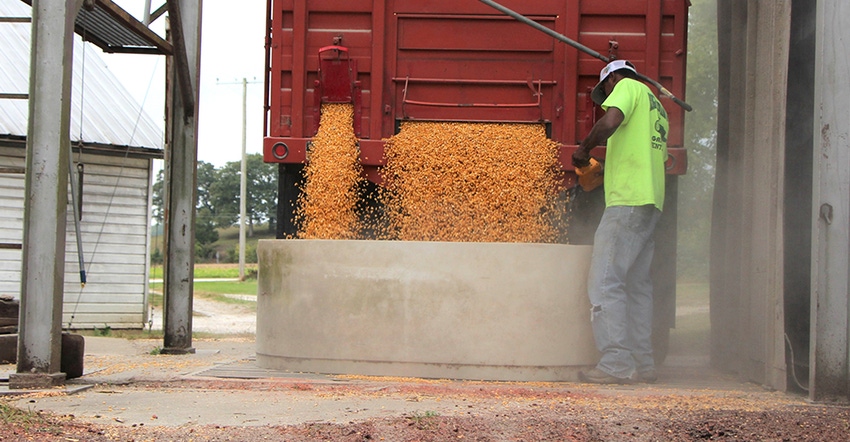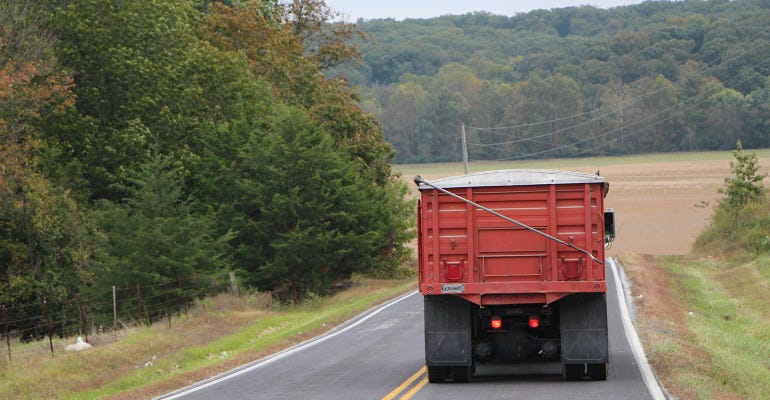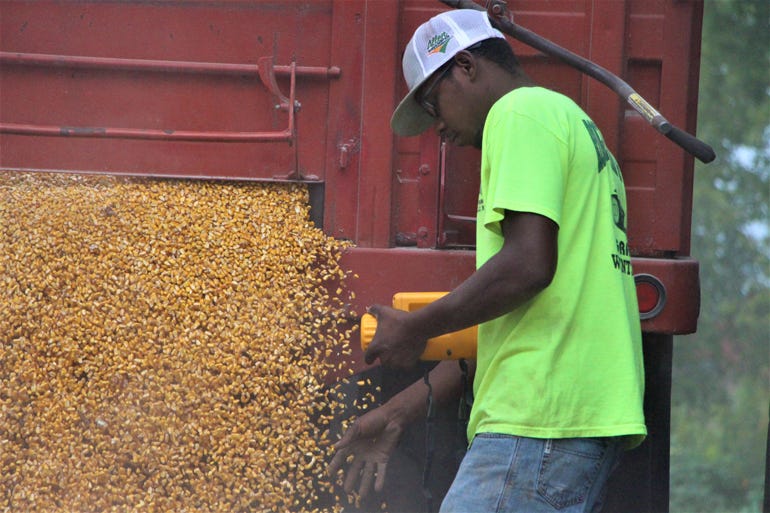
It is the year of the combine head switcheroo.
On a sunny day at Brakensiek Farm, they are cutting beans. The next day, as clouds fill the sky and the air turns cool, the crew switches to corn.
“It’s been like that all season,” Trent Edwards explains, while unloading corn at the farm just north of Wright City, Mo. He transports grain as farm owner Tracy Brakensiek stays in the combine cab a few miles down the road. “We just change it with the weather,” Edwards adds.
Farmers are well behind last year in both corn and soybean harvest. According to the USDA National Agricultural Statistics Service, by mid-October corn harvest was at just 46%, well below the 79% at the same time last year. Harvested soybean acres were at 15%, below the 24% at this point in 2018. The problem is in maturity.

ROAD WARRIOR: During harvest, many farmers such as Trent Edwards spend countless hours driving from field to farm.

The corn crop still is not 100% mature. When it comes to soybeans, those dropping leaves were at only 69% this year, 14 percentage points behind last year. The lagging crop is due to delayed planting and, in some cases, replanted acres.
Replanted acres and variable maturity are causing farmers such as Brakensiek and Edwards to make more header switches than normal. And it requires harvest management adjustments. They don’t wait for complete drydown in corn.
Rather, they shell corn when the weather allows and run it through the dryer when necessary. Fortunately, the farm has ample on-site storage, so they can extend harvest hours as needed. When the sun shines, they change heads and head to the soybean field.
“It is just a different year,” Edwards says. He says there will be more header switches before the 2019 harvest season ends.

MOISTURE TEST: With each load delivered to Brakensiek Farm near Wright City, Mo., Trent Edwards stops to test the corn moisture coming out of the field and into the grain facility.

About the Author(s)
You May Also Like






